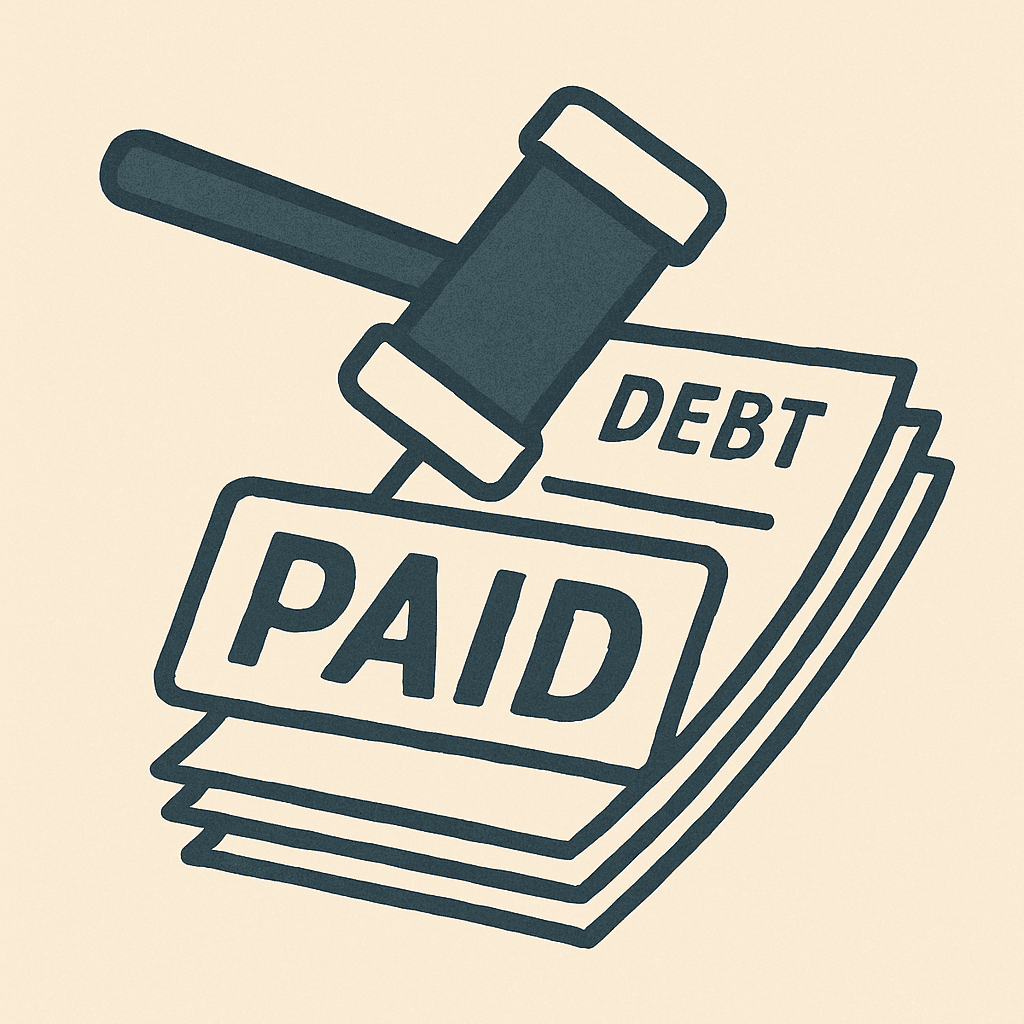5 Things That Could Be Covered By Consumer Protection Laws
Consumer protection issues can be less obvious than problems in divorce or criminal law. This is especially true today, where it feels like almost every business has hidden fees or mystery charges. But consumer protection laws exist so that you can fight back. And even though each state sets its own rules, here are five problems these laws can help address.
What Are Consumer Protection Laws, Anyway?
These laws aim to stop unfair, deceptive, or abusive practices in daily transactions. This includes buying shoes, sending money to a relative, or keeping your home. They create fairness between everyday consumers and businesses with larger budgets.
Key Definitions You’ll See in the Wild
| Popular Consumer Protection Law | Statutory Language in Plain-English |
|---|---|
| FTC Act § 5 (15 U.S.C. § 45) | Bars “unfair or deceptive acts or practices” (anything likely to mislead a reasonable consumer). |
| Dodd-Frank Act, Title X (12 U.S.C. § 5531) | Adds “abusive” to the unfair/deceptive duo—covering conduct that takes unreasonable advantage of a consumer’s lack of understanding. |
| Maryland Consumer Protection Act (MD. Commercial Law Code § 13-101) | Defines unfair, deceptive, and abusive acts broadly and allows seeking attorneys’ fees, but it has many exclusions, like real estate brokers, CPAs, and healthcare providers . |
| DC Consumer Protection Procedures Act (DC Official Code §28-3901) | Covers any trade practice that “has a tendency to mislead,” and more. It allows for punitive damages (financial penalties meant to punish the wrongdoer). |
| Illinois Consumer Fraud & Deceptive Practices Act (815 ILCS 505) | Requires conduct that’s “unfair or deceptive,” and authorizes attorneys’ fees for winners, but it might not apply to creditors. |
What to learn more about consumer protection laws across all 50 states, check out this report from the National Consumer Law Center.
1. Surprise Charges & “Gotcha” Fees
Ever clicked “Confirm Purchase” only to see a mysterious service fee tacked on at the last second? These junk-fee tactics often violate federal and state consumer protection laws such as the Restore Online Shoppers’ Confidence Act (ROSCA) and the Wisconsin Consumer Act (WCA). The government has cracked down, too:
- FTC v. Invitation Homes – $48 million agreed-to judgment against the country’s largest landlord of single-family homes, over hidden application and reservation fees, among other issues.
- FTC v. Rhinelander Auto Center – $1.1 million returned to consumers after an auto dealer group tacked on hundreds or even thousands of dollars in illegal junk fees onto car prices.

Takeaway: If you didn’t see the fee until checkout or after you paid, your rights might have been violated.
2. Unauthorized Bank Transfers & Account Takeovers
Money disappears via Zelle, ACH, or debit card, and your bank says, “Too bad”? The Electronic Fund Transfer Act (EFTA) and Regulation E often shift liability back to the bank, provided you report quickly. Improve your chances of getting your money back by:

- Moving quickly. Report the unauthorized charge as soon as you spot it. Under Reg E, you generally have 60 days from the statement date to give notice.
- Telling the bank and following up in writing. Call your bank immediately or use your banking app to notify the bank of the charges (remember to take screenshots if possible). Then follow up through email or certified mail, including your name, account number, the date of the charge, the amount, and a clear explanation of why you believe the charge is not legitimate.
- Staying polite but persistent. Fraud teams handle thousands of claims; clear, factual follow-ups keep yours moving.
- Escalating if needed. File a complaint at ReportFraud.ftc.gov and with the CFPB if your bank misses deadlines or rejects a well-documented claim.
Quick security tips: Use strong passwords, enable two-factor authentication, and keep screenshots of every dispute notice.
3. Deceptive Product or Service Claims
Marketing claims cross the line when they mislead reasonable buyers. Below are four everyday scenarios that could trigger consumer-protection claims, depending on the facts and proof you can gather:
- The “Organic” Juice That Isn’t
A juice brand splashes the word organic across its packaging, but third-party testing finds conventional pesticide residue. Shoppers who paid a premium for a healthier option can argue they were misled about a key quality of the product. - The “Lifetime” Pan That Warps in Year One
Cookware marketed as having a lifetime durability arrives with a warranty so riddled with exclusions that almost no defect qualifies. Courts have treated similar discrepancies as deceptive because the promise of “lifetime” implies real durability. - The “Clinically Proven” Weight-Loss Patch
An online ad touts a patch that “melts fat” without diet or exercise, citing unnamed “clinical studies.” When challenged, the seller can’t produce any peer-reviewed research. Claims like these often violate both FTC guidelines and state UDAP statutes that require substantiation. - The “90% Pass Rate” Test-Prep Course
A learning platform boasts a 90% exam pass rate to justify its hefty subscription fee. Internal data later shows the figure includes free trial users who never took the test. Inflated statistics about success rates (or earnings, for that matter) can be actionable if consumers rely on them when choosing the service.

Bottom line: If a product’s promise sounds too perfect, consumer-protection law may give you leverage to demand a refund or damages.
4. Harassing Debt-Collection Tactics
Debt buyers often purchase old accounts for pennies on the dollar and then employ harassing tactics, such as threatening arrest, calling at midnight, or contacting your employer. The debt buyers might even race to court, hoping you won’t show up. One recent North-Carolina class action illustrates how that strategy can backfire:

- Who was sued? Portfolio Recovery Associates (PRA), one of the nation’s largest debt buyers.
- What went wrong? PRA obtained thousands of default judgments without filing adequate evidence that the debts were even owed.
- How was it fixed? After years of litigation, PRA agreed to:
- Pay $5.75 million into a settlement fund benefiting more than 18,000 people.
- Cancel about $35 million in judgment debt by filing satisfactions of judgment.
- Stop all collection efforts on the disputed accounts.
- Why it matters: If a collector sues without real proof, or wins a default judgment based on missing or robo-signed documents, you may have options to unwind the judgment, block wage garnishment, or even collect damages.
Tip: Never ignore a collection lawsuit. Respond on time, demand documentation, and consider talking to a consumer-protection lawyer if the paperwork looks flimsy.
5. Mortgage-Servicing Errors
Servicers handle billions in homeowner payments every month. When they fall short, small mistakes can snowball into foreclosure threats. A recent federal enforcement action shows how serious these lapses can be:
- Who was targeted? A national mortgage servicer accused of systemic record-keeping failures.
- What went wrong? Investigators found repeated misapplication of payments, mistaken “force-placed” insurance, and foreclosure notices sent while borrowers were still in approved forbearance plans.
- How was it fixed? The servicer agreed to:
- Provide hundreds of millions in borrower relief (cash refunds, rate reductions, principal forgiveness).
- Pause or rescind foreclosures that were initiated based on faulty data.
- Overhaul its error-resolution process and submit to multi-year regulatory monitoring.
Common red flags homeowners notice
- Payments applied to “fees” first instead of principal and interest.
- Escrow surprises—sudden demands for thousands because taxes or insurance were “under-funded.”
- Dual-tracking notices: you’re negotiating a modification yet receive a sale date anyway.
- Force-placed insurance added even though you’ve maintained coverage.

First step many homeowners take: Document everything (statements, letters, phone logs) and ask the servicer in writing to clarify or correct the issue. A clear paper trail often speeds up any formal dispute process.
First Steps If You Think Your Rights Were Violated
- Gather evidence: contracts, statements, screenshots.
- Send a timely written notice, especially if the statute requires it.
- File a complaint with the FTC or CFPB to build a record.
- Consult a consumer-protection lawyer: deadlines differ by issue.
- Stay vigilant: wrongdoers often try a second round.
Request a Consultation (No Obligation)
Curious whether your problem fits one of these categories? Reach out for a free consultation
About the Author
Angel E. Reyes is a former federal enforcement attorney at the Consumer Financial Protection Bureau and the Federal Trade Commission. After bringing enforcement actions against the largest U.S. companies, which resulted in over $100 million returned to consumers, he left the government to open Power to the People Law PLLC. This law firm focuses on protecting people’s homes and bank accounts.
Disclaimer
Informational only. Attorney advertising. Not legal advice.
